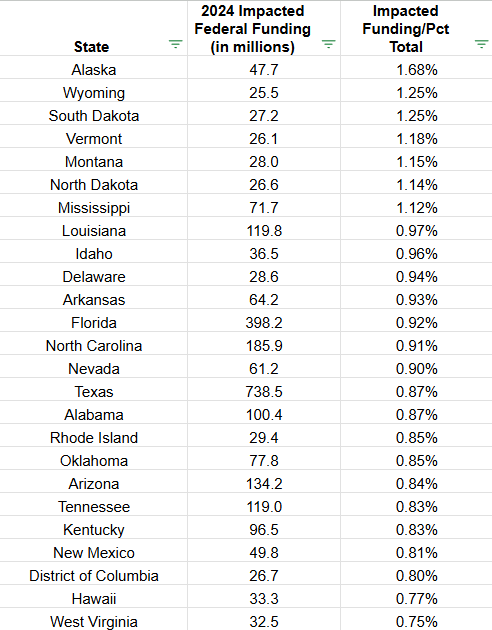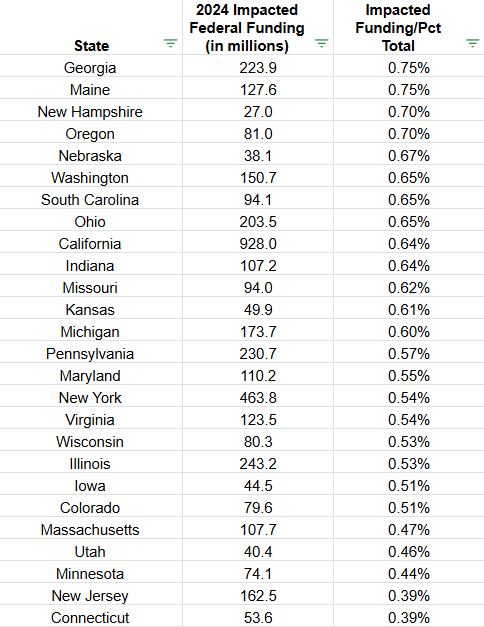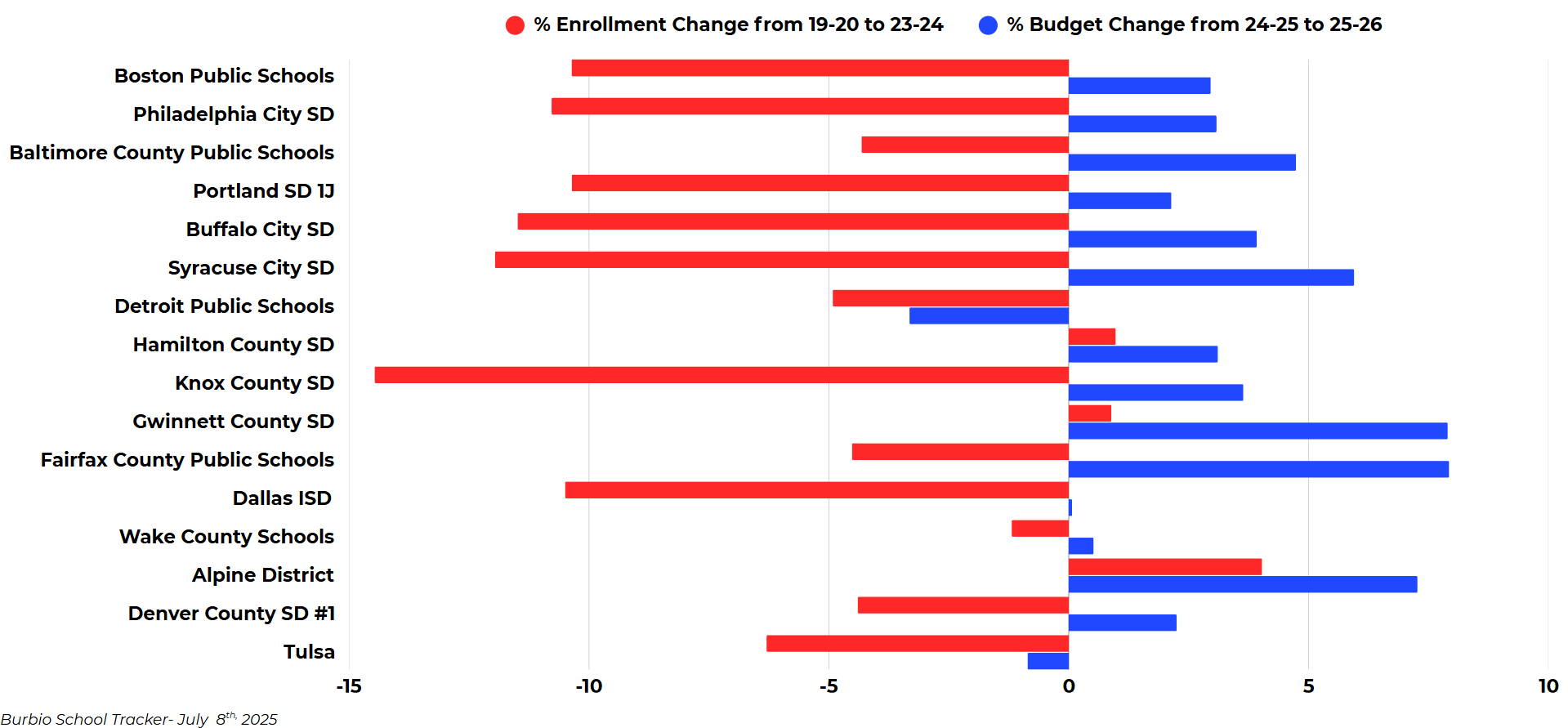1. Last week's announcement that the U.S. Department of Education is withholding six federal funding programs totaling almost $7 billion is compounding uncertainty across U.S. school districts. The move follows recent disruptions in ESSER III extension reimbursements - since reversed - and ongoing threats to withhold funds from districts engaged in DEI initiatives.
The suspended programs include five Title grants - covering professional development, afterschool and summer learning, English learners, migrant education, and student support - and a sixth for adult education and literacy. Though these programs account for less than 1% of national education spending, their broad reach means the impact is widely felt.
- In meetings with clients and partners at ISTELive 25 last week, Burbio repeatedly heard that district purchasing decisions are on hold pending clarity on federal funding - often extending to categories beyond those directly affected by the pause.
- While amounts vary, nearly every U.S. district receives some portion of this funding, and the freeze has introduced broad operational paralysis.
- The charts below rank states by the share of education spending impacted by the suspended funds. Percentages were calculated using 2024 state allocations for the affected programs, with 2023 total state education spending from NCES - the most recently available - serving as the denominator.
Here is a ranking of the top 25 states:

Next is a chart with states ranked 26-50:

2. With the finalization of 2025-26 district budgets, we take a look at some "ESSER-heavy" districts and how their expenditures compare to last year. Below is a chart that shows the expenditure change year-over-year (in blue), and the enrollment change since 2019-20 (pre-Covid). We note the majority have expenditure increases for 2025-26:

The suspension of Federal funding noted above is going to impact districts, so the above figures in blue could change. In our reviews of district budget presentations we noted the following techniques to reduce spending:
- School consolidations and grade reconfigurations
- Staff reductions either through attrition and/or cutting central staff
- Dipping into reserves
- Reduction in certain types of capital projects
What we did not see was general reductions in instructional supplies or technology purchases.
To learn how Burbio tracks state and district priorities, funding, and planning - and how this data supports PreK-12 solution providers - you can schedule a short demo here.
3. Burbio's Signals Tracker uses AI to provide highly specific, contextual answers across a wide range of school operations, from policy setting to purchase decisions. MTSS (Multi-Tiered System of Supports) is a framework used to provide targeted support to students. This week we feature some examples from a Signals Tracker question that asked to categorize where districts are in their implementation of MTSS:
- Chapel Hill Carrboro City Schools, NC, will be exploring the role of using MTSS teams for identification of students for their Academically and Intellectually Gifted program. "Differentiation for advanced learners is an explicit part of the MTSS decision-making process," notes the summary.
- Maine Administrative School District No. 06, Buxton, ME, held a wide-ranging discussion of MTSS implementation in a recent meeting, focusing in particular on the integration of BARR (Building Assets, Reducing Risk) into the MTSS process.
- Natrona County School District 1, WY, presented a detailed review of their MTSS program, describing different types of supports (Tier 1, Tier 2, Targeted/Intensive), implementation across grade levels, and presentations from leaders of different schools and academic programs in the district.
- A recent Forest Hills Public Schools, MI, board meeting featured a school principal presentation outlining the integration of Positive Behavioral Interventions and Supports (PBIS) into their MTSS program.